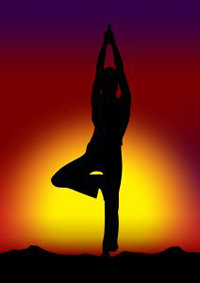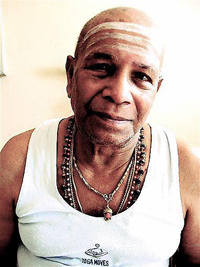Yoga has become one of the hottest fitness and spiritual practices here in the U.S., but in India, yoga’s country of origin, the face of yoga looks markedly different than what we are familiar with. For the month of June and July, I will be in Mysore, India, the hub of Ashtanga yoga, one of the oldest known forms of yoga that is still practiced with enthusiasm and dedication today. Although this is my second trip to the sacred country of India, these five weeks are different because I am here studying yoga with my family, just a few weeks following the death of Ashtanga master, Sri. K. Pattabhi Jois.
Doing yoga in its fatherland is extremely different than practicing it here in a posh or not-so-posh Western studio. A combination of the sweltering heat and moist humidity, both of which have a near magical way of making your body incredibly open and flexible, and the mere energy of downward dogging on the same ground that yoga was first practiced by mankind is both humbling and awe-inspiring.
As a yoga student in India, one of the realities that strikes me as so profound is that Indians don’t do yoga. Or at least not the way it is practiced here in the States. Yoga is so intricately and deeply embedded in the colorful and dichotomous culture of India that Indians don’t need to practice it like we do. They already “get” the fundamental concept of yoga, which literally means to yoke or unite as in the connecting the mind, body and spirit entities of our selves. 
The kind of yoga you do see regularly in India is the seamless way in which Indians regard their spirituality. Daily acts of reverence, prayer and homage make any foreigner acutely aware of how entrenched this awareness is. Perhaps Indians don’t take yoga classes like we do, but it is quite common to see older men and women sitting not on chairs but on the ground positioned in lotus or padmasana pose – a posture that most of us Westerners can only dream about twisting into. It’s not just their minds that are almost unconsciously aware of their spirituality, but their bodies reflect the openness as well.
While yoga is relatively new to the West, it has been a way of life in India for the past 5,000 years, so it makes perfect sense that this powerfully subtle practice is as much a part of the fabric of their culture as The Declaration of Independence is to ours. Over the course of the next few weeks, I’m going to be sharing my insights and experiences of my weeks in India. From health to food and from yoga to meditation, I’m looking forward to cross-comparing our cultures and absorbing some of the profound knowledge of this ancient yogic land.

